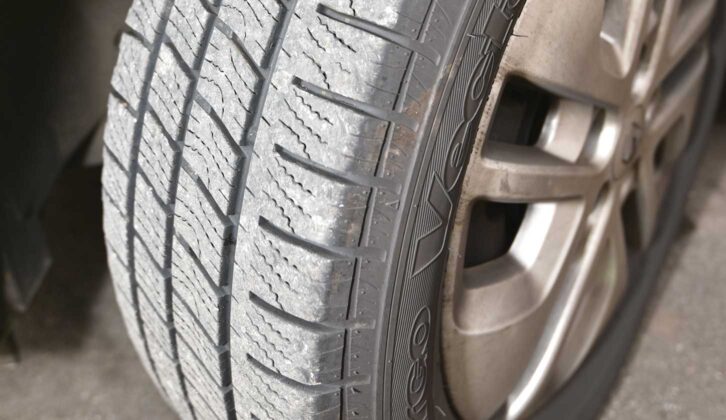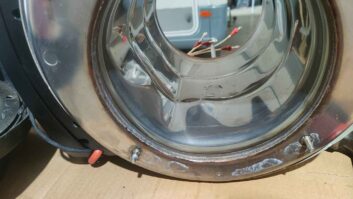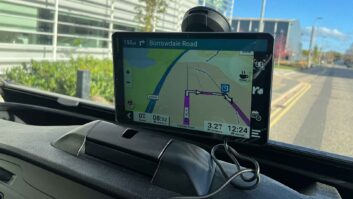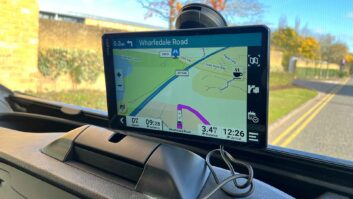I’ve talked about ‘van tyres quite often in the past, but I’m returning to this important topic because I’ve recently become aware of a different issue, mostly involving VW vehicles, but actually applying to any converted panel van.
The issue is fitting the right motorhome tyres. I don’t mean camper-specific tyres; in my opinion, the problem is car tyres on large-diameter rims. I’ve seen this myself on a couple of T5 and T6 conversions, where the converter has fitted 17- or even 18-inch wheels and super-low-profile tyres, as they “look good”.
The trouble is, not many commercial vehicle tyres will be made in these sizes, especially with ultra-low profiles, and many car tyres simply do not have sufficient load rating for a ’van.
Looking at load ratings before choosing or fitting tyres
Your typical 3.5-tonne ’van will have axle load ratings of around 1800kg for the front and 2000kg at the rear. These are the maximum weights those axles can safely support.
So the tyres on a 2000kg rear axle need to have a load rating of at least 108, which gives 1000kg per tyre. You would typically use a higher load rating to give a safe margin.
Many 18-inch tyres only go up to a 91 rating, which is just 600kg per tyre, and when you then consider that many campervans are close to, if not over, their weight limits, you can see that this is a recipe for disaster.
I read of one such set-up recently, where a Sprinter van conversion failed its MOT because its tyres had insufficient load rating for the vehicle. This was despite the motorhome passing its MOT for the previous five years with those same tyres in place. Nothing had changed legally, it was just that the tester in this instance had spotted the problem and issued a failure notice.
Risking blowout or collapse
T5s and T6s can sometimes get away with this, if they’re the smaller weight variants, but when you come to a long-wheelbase Sprinter, which could have an MTPLM of four tonnes or more, fitting car tyres can be a really bad idea.
In my opinion, larger-diameter rims can also be suspect – if they were intended for a big SUV-type car, they won’t have a high enough load rating, either. A heavy vehicle with insufficient load rating on tyres and wheels could at the very least suffer a blowout, but worse would be for a wheel to collapse – imagine that when you’re driving a motorhome at 60mph on a busy motorway!
The final irony is that ultra-low-profile tyres will almost certainly ruin the ride quality, too, and all in the name of appearance.
If you’re looking for a Volkswagen ‘van, our guide to the best VW campervans is well worth a look, as we share our favourite options on the market.
Future Publishing Limited, the publisher of Practical Motorhome, provides the information in this article in good faith and makes no representation as to its completeness or accuracy. Individuals carrying out the instructions do so at their own risk and must exercise their independent judgement in determining the appropriateness of the advice to their circumstances. Individuals should take appropriate safety precautions and be aware of the risk of electrocution when dealing with electrical products. To the fullest extent permitted by law, neither Future nor its employees or agents shall have any liability in connection with the use of this information. Double check any warranty is not affected before proceeding.
If you’ve enjoyed reading this article, why not get the latest news, reviews and features delivered direct to your door or inbox every month. Take advantage of our brilliant Practical Motorhome magazine SUBSCRIBERS’ OFFER and SIGN UP TO OUR NEWSLETTER for regular weekly updates on all things motorhome related.









